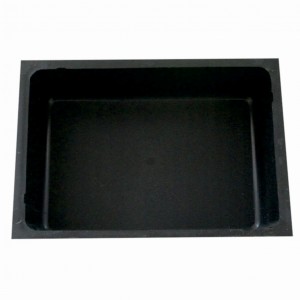







PAY ATTENTION!
All seeds (except SOLD OUT) are available for immediate shipping and will be dispatched within 1-2 business days.
INFORMATION NEEDED? PLEASE CONTACT US NOW!
Elegant and stately when seen in a park or lining a boulevard, littleleaf linden is a versatile shade and specimen tree for spacious landscapes. A large deciduous tree from Europe and the Caucasus where it is celebrated, it becomes an upright tree with a broad pyramind-like stature. The bark is grayish brown and is ridged and furrowed; its branching is dense and upward reaching.
The dark green leaves are wide ovals that taper to a point. Glossy, the leaf edges are lined in tiny teeth. There are tufts of tiny brown hairs in the leaf axils (area between the leaf stalk and the twig). In midsummer, pendent clusters of fragrant pale yellow flowers occur, attracting nectar-seeking bees in profusion. The pea-sized, whitish tan fruits (nutlets) dangle downward with a finger-like bract (modified leaf) and are showiest in late summer. In fall the foliage becomes a subdued mix of yellows and yellow-green.
Grow littleleaf linden in full to partial sun in a fertile, deep, moist soil that ideally is neutral to alkaline in pH. This species is tolerant of acidy soils as well as air pollution and drought once established. Planted in rows it creates an imposing allée or windbreak and can handle sheering well to become a wall-like hedgerow. It is equally impressive as a parkland specimen when its lowest branches remain and creates a massive gumdrop-shaped effect atop a lawn. Japanese beetles have been known to defoliage this tree.
Genus - Tilia
Species - Cordata
Common name - Littleleaf Linden
Pre-Treatment - Required
Hardiness zones - 3 - 7
Height - 15 - 24 m
Spread - 9 - 14 m
Plant type - Tree
Vegetation type - Deciduous
Exposure - Full Sun, Partial Sun
Growth rate - Medium
Soil PH - Neutral, alkaline
Soil type - Clay, loam, Sand, Well Drained
Water requirements - Average, drought tolerant
Landscape uses - Feature Plant, Shade Trees, Street Trees
Bloom season - June - July
Leaf / Flower color - Dark Green / Light Yellow
GERMINATION INSTRUCTIONS
1. Soak the seeds for a few hours in warm water.
2. Mix the seeds with moist vermiculite or sterile sand, place in the zip-bag. Close it and gently shake to distribute the seeds through the starting medium.
3. Place the bag in the refrigerator at +2-+7C (34-41F). The vegetable crisper works nicely for this!
4. Check on your seeds every two weeks. Add a bit of water if needed (but only to moisten). If any seeds begin to mold, remove them.
Generally, the seeds should be planted after 60 days of cold and moist stratification. But if the seeds start to show signs of germination (little sprouts), then remove them from the refrigerator and plant.
The seeds should be planted indoors in a seed tray or individual containers. Plant at a depth of the seed size. Keep the seedlings watered regularly – moist, but not wet. Set them in partial sunlight.
After the last frost in your area, you can transplant the seedlings outside. Be sure to pay close attention to your little trees especially during the first two years – watering regularly and protecting them from mowers and wildlife. (info source: spsmw.org).
Atsiliepimų apie šią prekę kol kas nėra.
No questions about this product.









